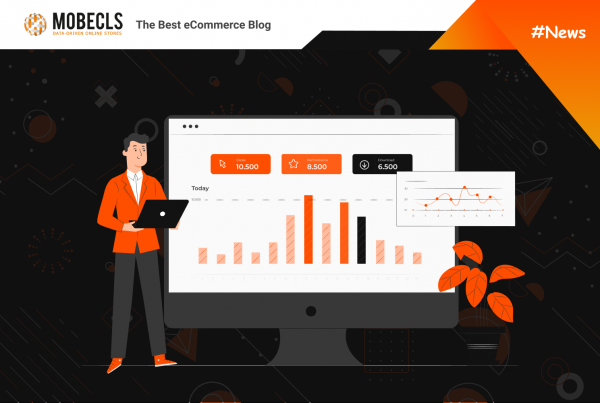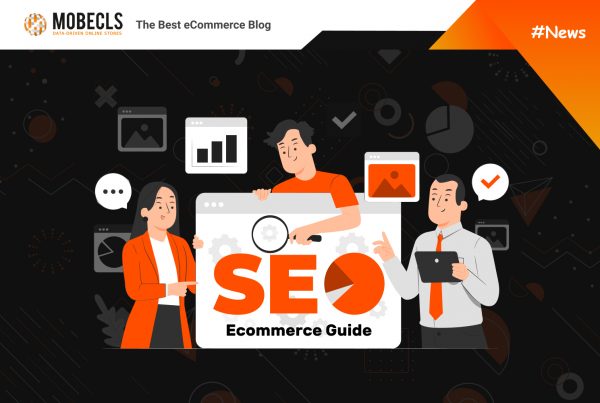What is the most reliable marketing channel? What will work for you in the long run continuously generating more and more users? AdWords? Google Ads is good but a little bit expensive. You need to spend approximately 25-50 $ to convert a potential customer to a real one. Facebook requires 12-25 $. What is left? Right you’re, SEO!
Want to know how did we get these figures? Check out Why do SEO for Magento stores.
Moreover, it’s the most innovative marketing channel among all. Google constantly improves search engine algorithms making SEO more beneficial for the website owners. Today we will find out how SEO has changed over the last decade and what these changes have brought us.
Content. Content. Content…
For a long period of time user-experience meant nothing for search engines and SEO specialists. The Internet was about the quantity of content but not the quality. No one was ashamed to produce tons of spammed and keyword-stuffed content. It was absolutely useless for users but it was helping sites to climb the top of metasearch.
Things changed in 2011 when the Google Panda Update was released. If you produce keyword-stuffed, spammed, or plagiarized content your site gets penalties. Now, the production of poor content is a waste of time and worthless activity.
Panda Update marked the rise of ethical SEO and content marketing. If you’re good at creating high-quality content you rule the game of SEO. There’re no problems if you can’t do it by yourself. You can buy a good SEO text for 30 $ and it will work for you for years. The only thing you need is just to update it periodically. Over time, content is ranked worse, so it’s essential to fresh it once a half year. It will be enough just to add a line, paragraph or renew the figures. If you do it, your content really works for years.
Goodbye Link Schemes
If you try to manipulate your Google rankings using links you violate Google’s Webmaster Guidelines and participate in a link scheme. It may include both links to your site or outgoing from your site.
In 2000 Google was working hard to fight spam-based link building. They had been solving the issue of link schemes for 12 years. Only in 2012, with Penguin Update we got the link building we use today.
Since 2012, Google has been de-listing, banning, and penalizing websites that use link schemes. How to build a link building strategy in 2020? Today, your links should be relevant and live. A relevant link means that it leads users to a page that matches an anchor (a text of a link). Google’s recommendation: “Make sure that any sites that should know about your pages are aware your site is online”.
Natural link building is good but requires time and sometimes it may be ineffective. No one will ban you if you’ll buy some links but in a wise way. Not hundreds or thousands of them like site owners used to do.
SERP Evolution
I guess even the most proficient SEO experts won’t say you how many times SERP (search engine results pages) have changed. Some of them were so tiny that it’s hard to count them as a change.
Just look at how it looked like in 2000, 2006, and 2019:
The difference is insane. 2000 was the year when AdWords was born. It was the year of great banner wars. From 2001 to 2007 the main emphasis was made on Universal Search instead of simple web search. Since 2008 SERP became incredibly complex. The ever-growing amount of information made it develop at a fast pace to deal with information processing.
Google became faster, more optimized and it helps sites that offer good-quality content.
Mobile Environment
Mobile queries have officially surpassed desktop ones in 2015. That was the moment when Google decided to reward websites that provide excellent user experience to smartphones and tablets owners.
Moreover, in 2018 mobile page speed became one of Google’s ranking factors for mobile search. Haven’t optimized your website for mobile users yet? It’s not too late to do it.
Does your mobile site perform well? Even if you haven’t got any problems, you can make it faster. Find out the answers in our blog post: Mobile Performance: How To Speed Up Your Website.
Keywords 2.0
Panda and Penguin updates did a great work killing stuffed keywords. Nevertheless, in 2013 Google introduced a new search algorithm — Hummingbird.
The algorithm introduced a semantic search. It allows Google to interpret users’ intentions instead of relying on keywords. Now the search engine can understand what people want. It’s a more reliable way as words can still be exploited to reach higher ranks.
Wrapping Out
SEO optimization became a more complex process than 10 years ago. Back then, you could just write an absolutely senseless text stuffed with keywords to climb the top. Text requirements have become stricter. It must be well-structured, contain certain elements like charts, lists, pictures and etc.
Link building has also changed. You have to choose platforms where you can buy them more wisely, think about the page’s content, and where this link should be placed.
Technical optimization has become more important. Websites should be fast, user-friendly, convenient for disabled people.
Undoubtedly, Google has changed beyond recognition during the last two decades. Has it become better? Probably yes, at least for users. Nevertheless, there’re a lot of things that can be improved. It’s essential to know how SEO was like but we should be focused on the future Google updates to stay relevant.
 Mobecls team provides basic and advanced SEO audits, SEO and performance optimization services. We are SEO-focused development company that specializes in Magento | Adobe Commerce. It means that we know what and how to fix SEO issues, taking into account your UX, Marketing and Business specifics.
Mobecls team provides basic and advanced SEO audits, SEO and performance optimization services. We are SEO-focused development company that specializes in Magento | Adobe Commerce. It means that we know what and how to fix SEO issues, taking into account your UX, Marketing and Business specifics.




